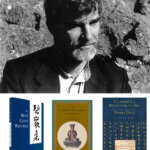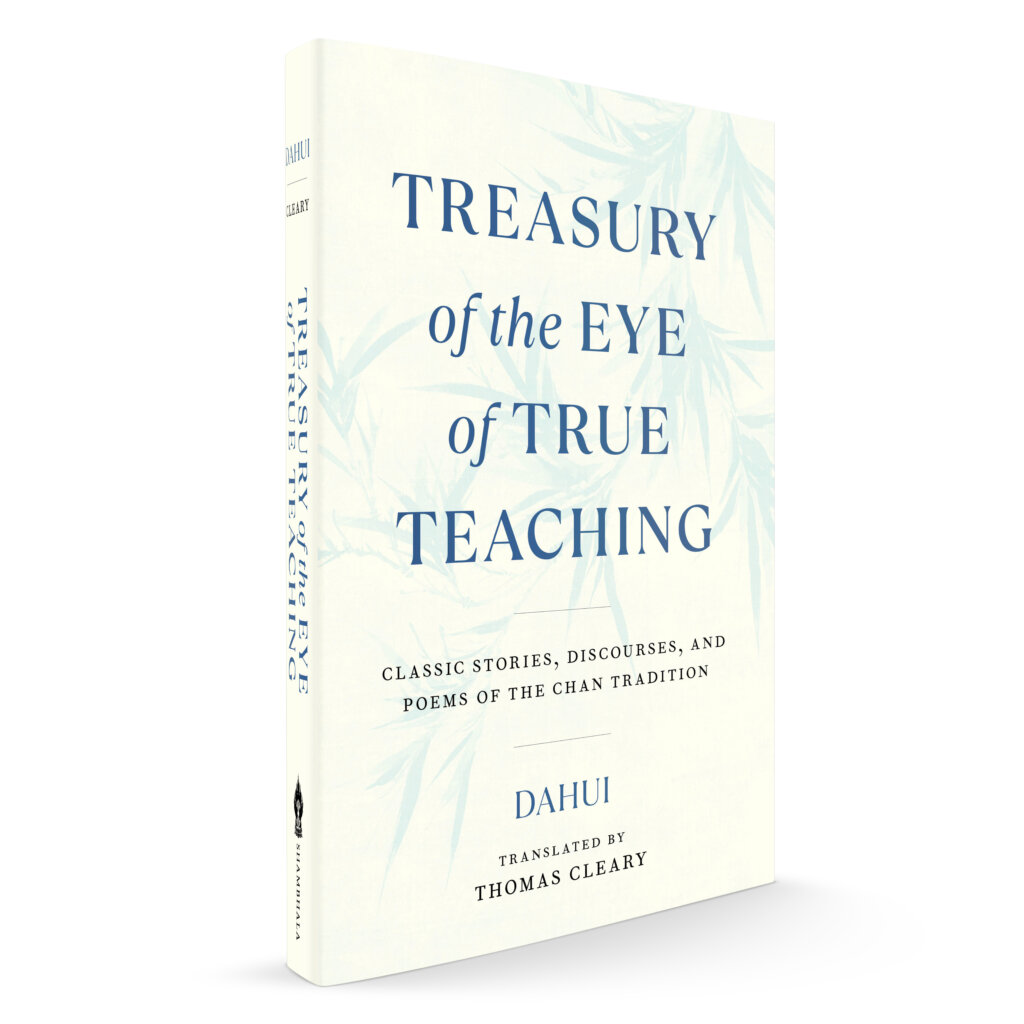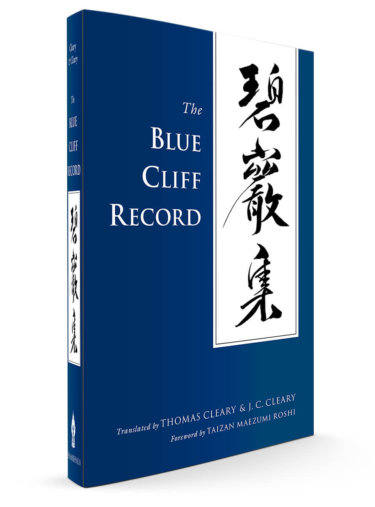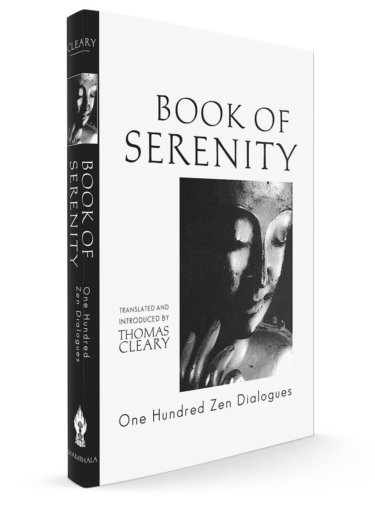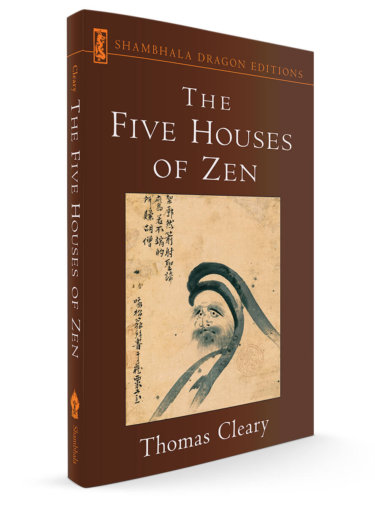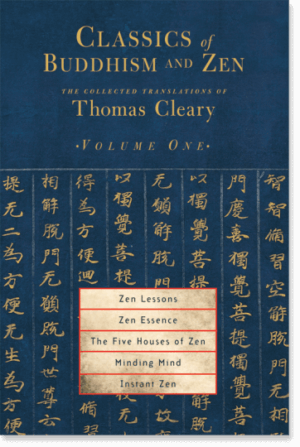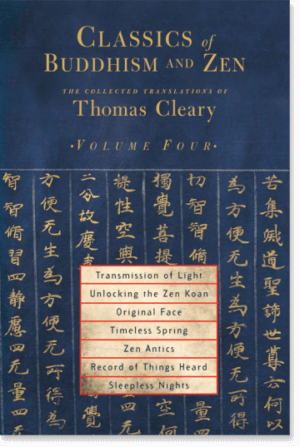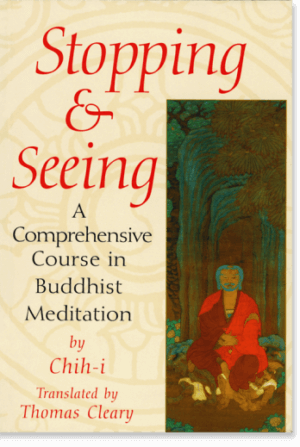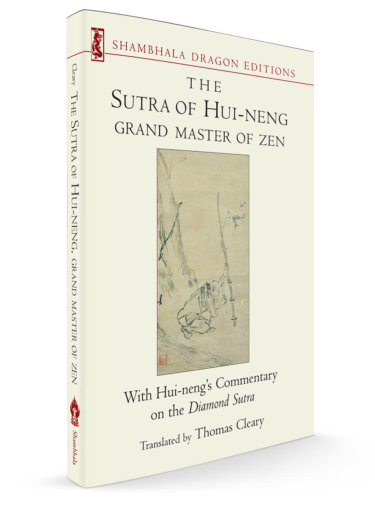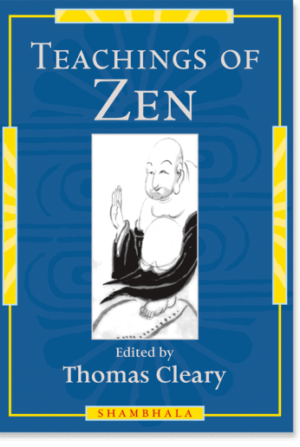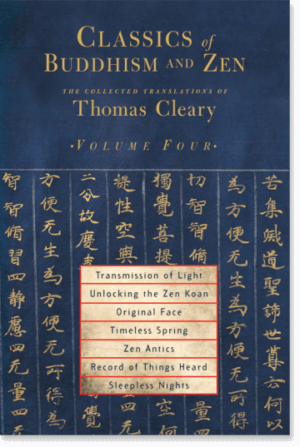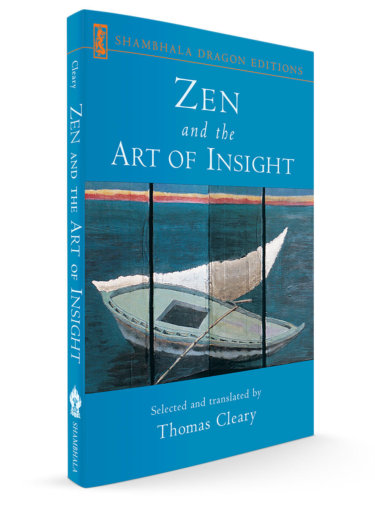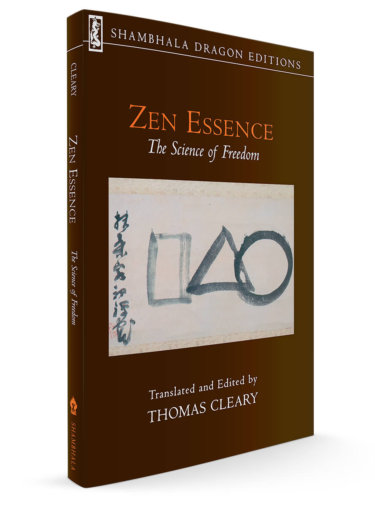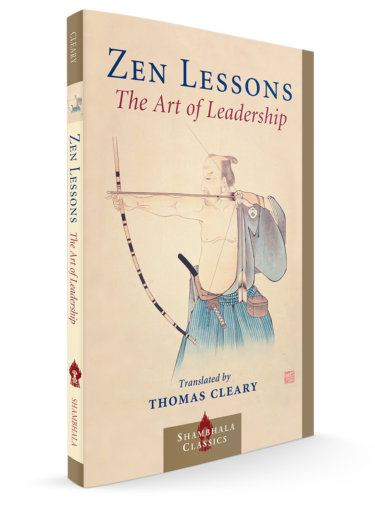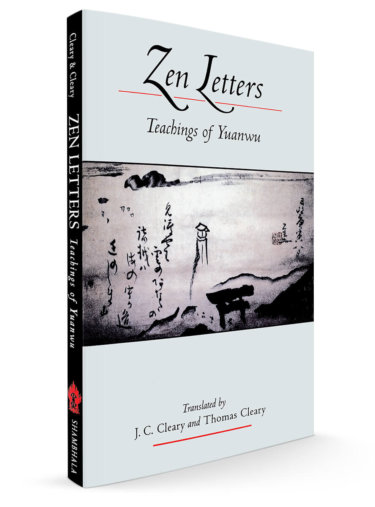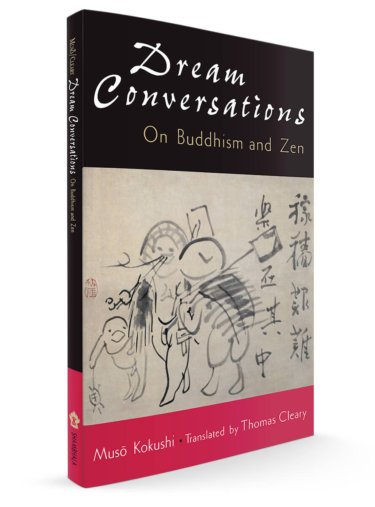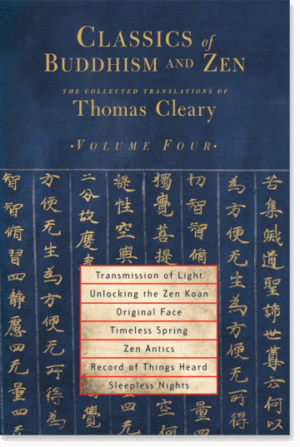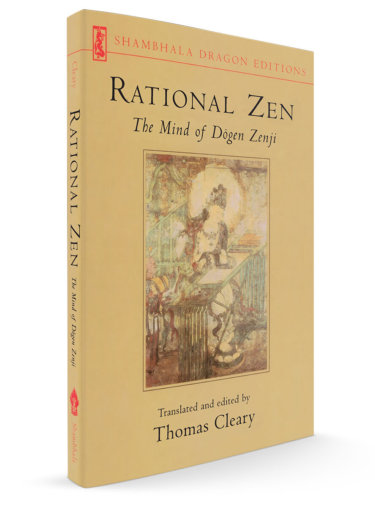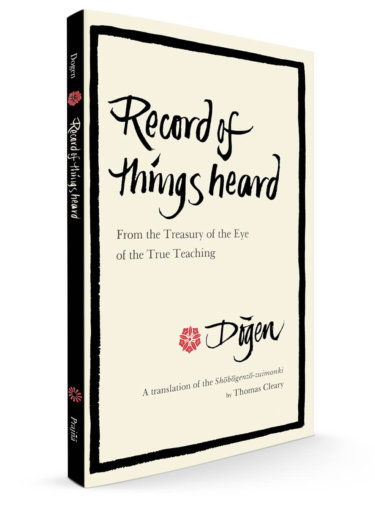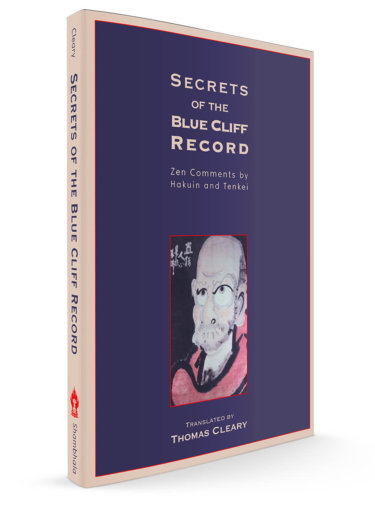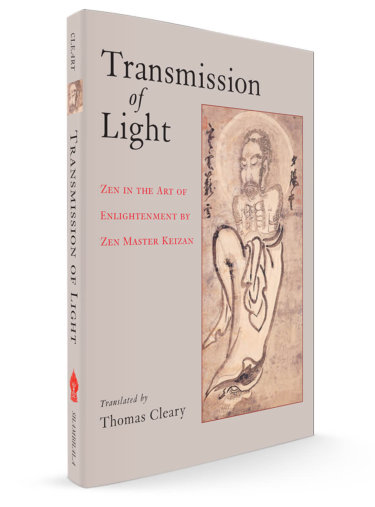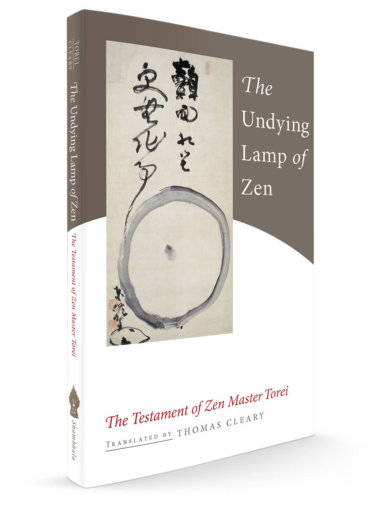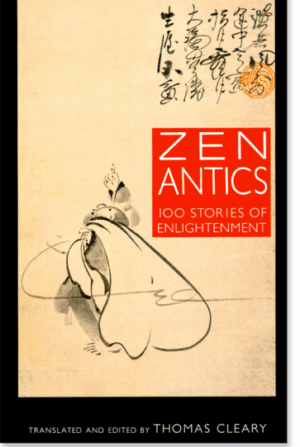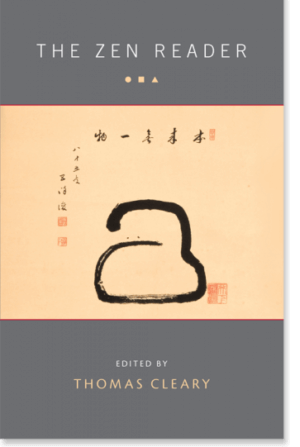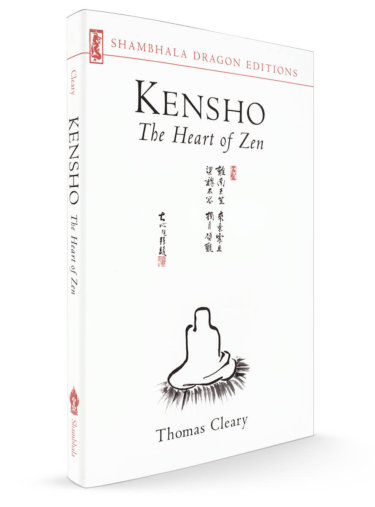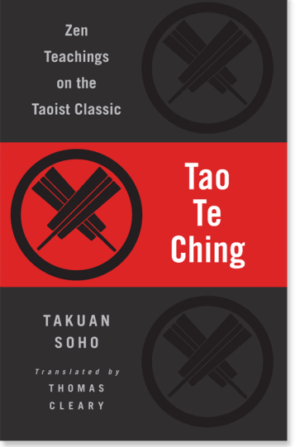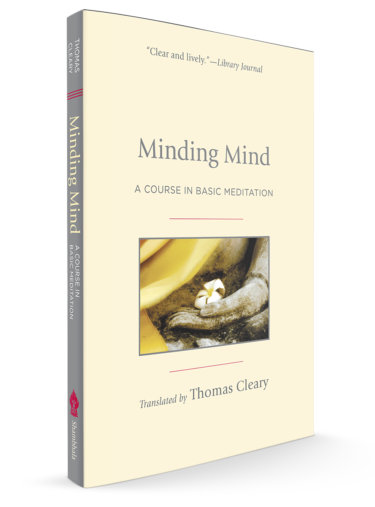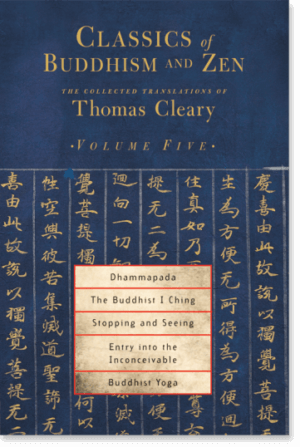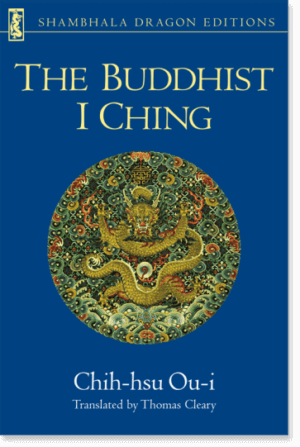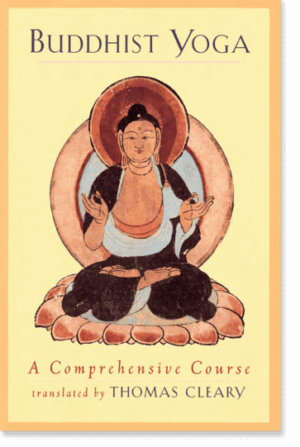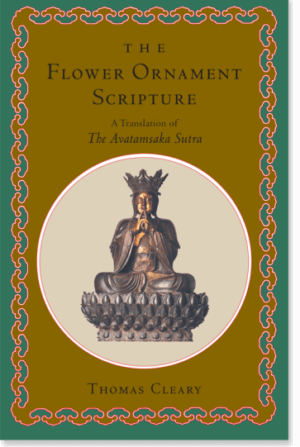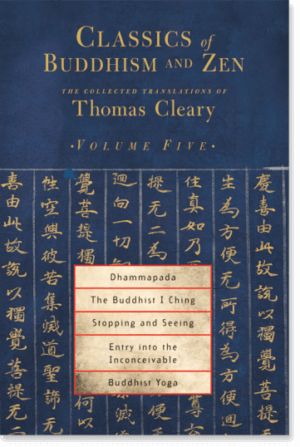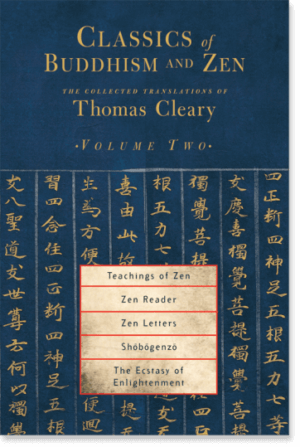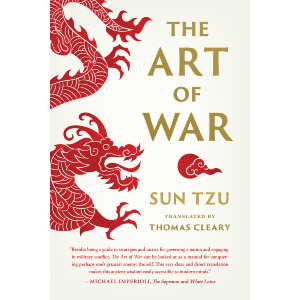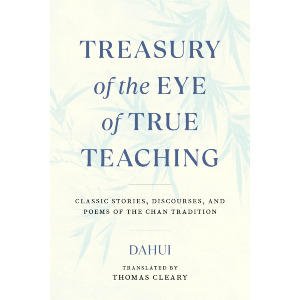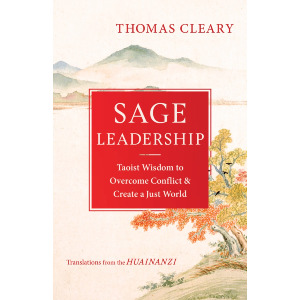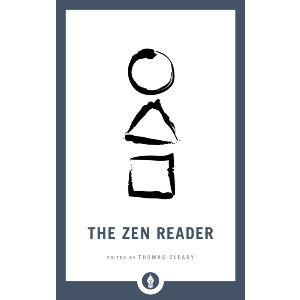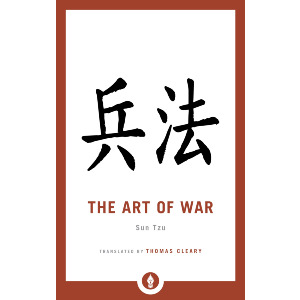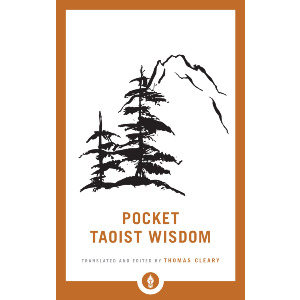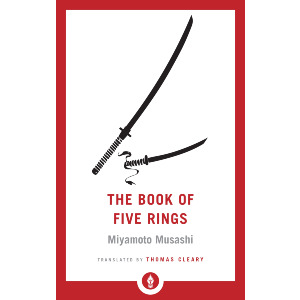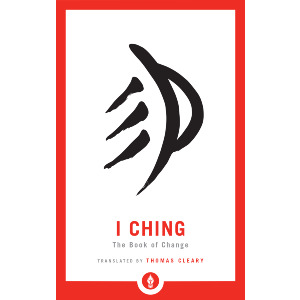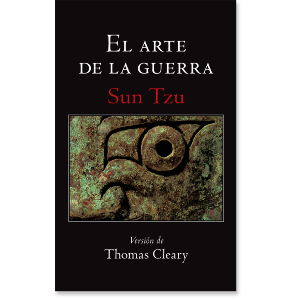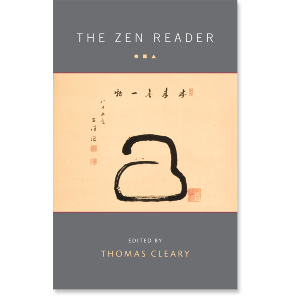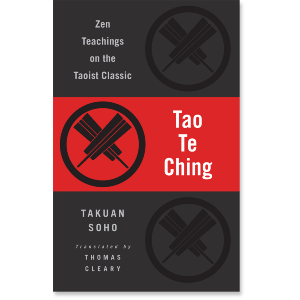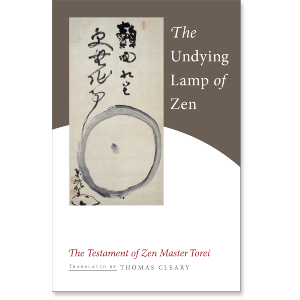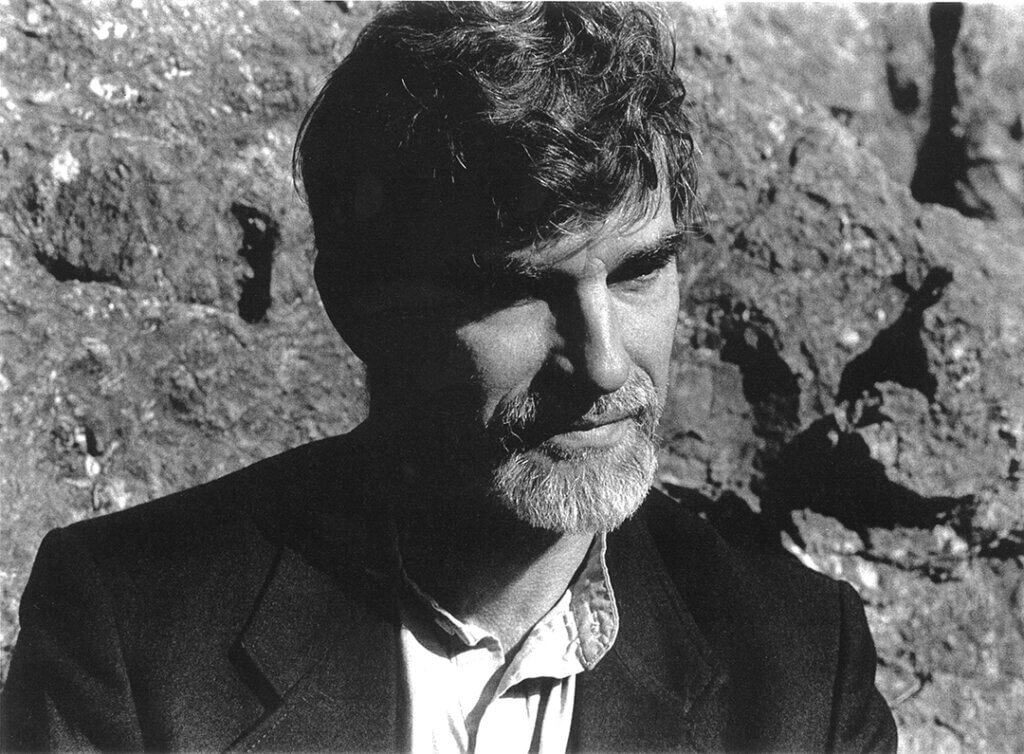
Thomas Cleary (1949—2021) was one of the twentieth century’s greatest translators of Asian classics. He was extremely prolific, translating and authoring countless works. Shambhala Publications has published over sixty. His books have sold millions of copies and his translations have in turn been translated into over twenty languages worldwide. His first published project, in collaboration with his brother J.C. Cleary, was the classic Blue Cliff Record, that great collection of koans.
Buddhism was a large part of his translations, with over thirty works spanning the traditions of Chan, Zen, and Soen while also including Tiantai, Indian Tantra, Theravada, and Hua-yen, and Bushido. Arguably his magnum opus is the 1,600+ page Flower Ornament Scripture, a masterpiece of translation from one of the most influential works of Mahayana literature. In Lion's Roar magazine, Taigen Dan Leighton describes it as "a samadhi text, designed to inspire luminous visions and exalted experiences of mind and reality through its use of lush, psychedelic, evocative imagery."
Below is a guide to Cleary’s Buddhist works published by Shambhala Publications. We hope you enjoy it and benefit from Cleary’s lifetime of dedication to these texts and the figures behind them.
We also are editing another Buddhist translation of Thomas’s that will be published in 2022.
Jump To: Chan | Zen | Pan-Tradition | Theravada, Buddhist I Ching, Yogacara, Hua-Yen, Tantra
Thomas Cleary Reader Guides
Buddhism | Taoism | Art of War, Strategy, & Martial Arts | I Ching | Greek Wisdom, Sufism & Islam
Buddhism
Chan Buddhism in China
Robert Thurman said the following about Thomas Cleary in Tricycle Magazine:
There is no doubt in my mind that Thomas Cleary is the greatest translator of Buddhist texts from Chinese or Japanese into English of our generation, and that he will be so known by grateful Buddhist practitioners and scholars in future centuries. Single-handedly he has gone a long way toward building the beginnings of a Buddhist canon in English.
So we begin with Cleary’s works on Buddhism.
The Final Translation of Thomas Cleary
Cleary passed away after completing final edits on one of the most important but previously untrnslated collections by Dahui.
Treasury of the Eye of True Teaching: Classic Stories, Discourses, and Poems of the Chan Tradition
by Dahui
Chan master Dahui’s monumental compilation of teachings is brought to life for the first time in English
The Treasury of the Eye of True Teaching (Chinese Zhengfayanzang) stands among the greatest classics of Chan Buddhism—the Zen tradition of China—combining speeches, stories, dialogues, poems, and commentaries that the acclaimed Chinese master Dahui (1089–1163) extracted from Chan lore. Compiled during the Song Dynasty by Dahui’s disciples, this work is replete with the enigmatic, paradoxical wisdom for which this influential Buddhist tradition is so well known.
Famous for his challenging methodology and vigorous efforts to eliminate attachment to both conventional thinking and the grasping of the ego, Dahui here focuses on the teaching of “great doubt.” By grappling with “great doubt,” Dahui demonstrates how practitioners are able to push themselves to the limits of ideas and concepts until a breakthrough to enlightenment is achieved.
A fascinating compendium of literary and spiritual puzzles, Treasury of the Eye of True Teaching challenges and inspires its readers to examine their ingrained mental habits and attachments—and to discover their inborn potential for an immediate and direct experience of reality.
The Blue Cliff Record
The Blue Cliff Record is a translation of the Pi Yen Lu, a collection of one hundred famous Zen koans accompanied by commentaries and verses from the teachings of Chinese Zen masters. Compiled in the twelfth century, it is considered one of the great treasures of Zen literature and an essential study manual for students of Zen. Also see Cleary’s translation of important Japanese commentaries on this text, Secrets of the Blue Cliff Record, below.
Book of Serenity: One Hundred Zen Dialogues
The Book of Serenity is a translation of Shoyo Roku, a collection of one hundred Zen koans with commentaries that stands as a companion to the other great Chinese koan collection, The Blue Cliff Record (Pi Yen Lu). A classic of Chan (Chinese Zen) Buddhism, Book of Serenity has been skillfully rendered into English by the renowned translator Thomas Cleary.
Compiled in China in the twelfth century, the Book of Serenity is, in the words of Zen teacher Tenshin Reb Anderson, "an auspicious peak in the mountain range of Zen literature, a subtle flowing stream in the deep valleys of our teaching, a treasure house of inspiration and guidance in studying the ocean of Buddhist teachings." Each one of its one hundred chapters begins with an introduction, along with a main case, or koan, taken from Zen lore or Buddhist scripture. This is followed by commentary on the main case, verses inspired by it, and, finally, further commentary on all of these. The book contains a glossary of Zen/Chan terms and metaphors.
The Five Houses of Zen
For all its emphasis on the direct experience of insight without reliance on the products of the intellect, the Zen tradition has created a huge body of writings. Of this literature, the writings associated with the so-called Five Houses of Zen which all arose in the Tang, are widely considered to be preeminent. These Five Houses were not schools or sects but styles of Zen teaching represented by some of the most outstanding masters in Zen history. The writings of these great Zen teachers are presented here and include:
- The sayings of Pai-chang, famous for his Zen dictum “A day without work, a day without food”
- Selections from Kuei-shan’s collection of Zen admonitions, considered essential reading by numerous Buddhist teachers
- Sun-chi’s unique discussion of the inner meaning of the circular symbol in Zen teaching
- Sayings of Huang-po from The Essential Method of Transmission of Mind
- Excerpts from The Record of Lin-chi, a great classical text of Zen literature
- Ts’ao-shan’s presentation of the famous teaching device known as the Five Ranks
- Selections of poetry from the Cascade Collection by Hsueh-tou, renowned for his poetic commentaries on the classic Blue Cliff Record
- Yung-ming’s teachings on how to balance the two basic aspects of meditation: concentration and insight
Instant Zen
This is included in Classics of Buddhism and Zen, Volume One.
Instant Zen presents the teachings of Foyan Qingyuan (1067–1120), a disciple of Wuzu Fayan, which offer simple exercises in attention and thought designed to lead to insight into the real nature of self.
Sleepless Nights: Verses for the Wakeful
Sleepless Nights: Verses for the Wakeful, one of the greatest masterpieces of the secular Buddhist poetry. Its verses mock the folly of tyrants and celebrate the indomitability of life.
This is included in Volume Four of the Classics of Buddhism and Zen.
Nearly 800 years ago, Mongol tribes from the Central Asian steppes swept into China. Through this upheaval, Wen-siang, a solitary buddhist poet, and a political outcast traveled throughout in his own homeland.Hi poetry captures the suffering of his era with remarkable sensitivity and beauty.
Stopping and Seeing: A Comprehensive Course in Buddhist Meditation
by Chih-i
"Stopping" and "seeing" are sometimes referred to as the yin and yang of Buddhist meditation—complementary twin halves of a unified whole. In essence, "stopping and seeing" refers to stopping delusion and seeing truth, processes back to basic Buddhist practice. One of the most comprehensive manuals written on these two essential points of Buddhist meditation is "The Great Stopping and Seeing," a monumental work written by sixth-century Buddhist master Chih-i. Stopping and Seeing, the first translation of this essential text, covers the principles and methods of a wide variety of Buddhist meditation techniques and provides an in-depth presentation of the dynamics of these practices.
The Sutra of Hui-neng, Grand Master of Zen: With Hui-neng's Commentary on the Diamond Sutra
Translated by Thomas Cleary
Hui-neng (638–713) is perhaps the most beloved and respected figure in Zen Buddhism. An illiterate woodcutter who attained enlightenment in a flash, he became the Sixth Patriarch of Chinese Zen, and is regarded as the founder of the "Sudden Enlightenment" school. He is the supreme exemplar of the fact that neither education nor social background has any bearing on the attainment of enlightenment. This collection of his talks, also known as the Platform or Altar Sutra, is the only Zen record of its kind to be generally honored with the appellation sutra, or scripture.
The Sutra of Hui-neng is here accompanied by Hui-neng's verse-by-verse commentary on the Diamond Sutra—in its very first published English translation ever.
Teachings of Zen
Though the teachings of the first Zen masters are sometimes considered innovation, they were actually a return to the core of Buddhist teaching and to an understanding of the importance of the personal experience of enlightenment. This anthology presents talks, sayings, and records of heart-to-heart encounters to show the essence of Zen teaching through the words of the Zen masters themselves. The selections have been made from the voluminous Zen canon for their accessibility, their clarity, and above all their practical effectiveness in fostering insight.
Unlocking the Zen Koan
Unlocking the Zen Koan is a translation of the koan classic Wumenguan and also includes Cleary's selection of comments by great Chinese Zen masters.
Zen and the Art of Insight
The Prajnaparamita ("perfection of wisdom") sutras are one of the great legacies of Mahayana Buddhism, giving eloquent expression to some of that school's central concerns: the perception of shunyata, the essential emptiness of all phenomena; and the ideal of the bodhisattva, one who postpones his or her own enlightenment in order to work for the salvation of all beings.
The Prajnaparamita literature consists of a number of texts composed in Buddhist India between 100 BCE and 100 CE. Originally written in Sanskrit, but surviving today mostly in their Chinese versions, the texts are concerned with the experience of profound insight that cannot be conveyed by concepts or in intellectual terms. The material remains important today in Mahayana Buddhism and Zen.
This work includes two Song Dynasty contributions:
Key selections from the Prajnaparamita literature are presented here, along with Thomas Cleary's illuminating commentary, as a means of demonstrating the intrinsic limitations of discursive thought, and of pointing to the profound wisdom that lies beyond it.
This work includes two important works that were translated or written during the Song and appear with Thomas Cleary's commentary.
- The Scripture on Perfect Insight Awakening to Essence, translated into Chinese by Weijing of the Song dynasty (960–1279). Either a retranslation of the original or a reworking of an older translation, this text contains some useful nonstandard terminology and adroitly connects the Prajnaparamita and Yogachara teachings of Buddhism
- Key Teachings of the Great Scripture on Perfect Insight is a systematic reduction of Xuanzang’s gigantic six-hundred-scroll Chinese translation of the scripture, made by Dayin of the Song dynasty.
Zen Essence: The Science of Freedom
Drawn from the records of Chan masters of the Tang and Song dynasties, this collection may surprise some readers.
Contributors include the Chan masters Mazu, Hadhi, Linji, Yangshan, Fayan, Fenyang, Xuedou, Huanglong, Yangqi, Wuzu, Yuanwu, Foyan, Dahui, Hongzhi, Ying-an, Mi-an, Xiatang, and Yuansou,
In contrast to the popular image of Zen as an authoritarian, monastic tradition deeply rooted in Asian culture, these passages portray Zen as remarkably flexible, adaptive to contemporary and individual needs, and transcending cultural boundaries.
The readings contained in Zen Essence emphasize that the practice of Zen requires consciousness alone and does not depend on a background in Zen Buddhism and Asian culture. The true essence of Zen resides in the relationship between mind and culture, whatever that culture might be. This unique collection of writings creates a picture of Zen not as a religion or philosophy, but as a practical science of freedom.
Further teachings of some of these masters, especially the earlier ones, are recorded in the translation and appendices of The Blue Cliff Record.
Zen Lessons: The Art of Leadership
The author of this work, Dahui Zonggao (1089–1163) had a different take on Silent Illumination which is described in The Circle of the Way and is also covered by Guo Gu in this video.
This guide to enlightened conduct for people in positions of authority is based on the teachings of several great Chinese Zen masters. Drawing on private records, letters, and long-lost documents of the Song dynasty (tenth to thirteenth centuries), Zen Lessons consists of short excerpts written in language that is accessible to the reader without any background in Eastern philosophy. This book serves as a guide to recognizing the qualities of a genuine Zen teacher; it also serves as a study of the character and conduct necessary for the mastery of any position of power and authority—whether religious, social, political, or organizational.
In the original Chinese, Zen Lessons is entitled Chanlin baoxun, or Chanmen baoxun, ‘‘Precious Lessons from the Chan (Zen) Schools.’’ It was originally compiled in the early twelfth century by two outstanding Chinese Zen masters, Miaoxi (better known as Dahui) and Zhu-an. In the late twelfth century it was further expanded by a Zen master named Jingshan, into the form in which the text exists today. Several commentaries on the text were written in China over the next five hundred years. It was first published in Japan in 1279, about one hundred years after its recompilation. Zen Lessons draws on the personal teachings of great Zen masters of the early Song dynasty, many from unusual sources, difficult to obtain or no longer extant, often originally available only through direct contact with the network of Chinese Zen schools. Some selections are not attributed to any written source and may have been written by one or another of the compilers, based on material derived from current oral tradition. Affording rare glimpses of the personalities of distinguished masters, Zen Lessons preserves a large body of special Zen lore that would otherwise have been lost to posterity.
Zen Letters: Teachings of Yuanwu
This book collects the letters of the primary author of the Blue Cliff Record, Yuanwu (1063–1135).
Zen Letters presents the teachings of this great Chinese master highlighted in The Circle of the Way as the author of the annotations and commentary in the Blue Cliff Record. In this book, his letters transmit direct, person-to-person lessons, intimately revealing the inner workings of the psychology of enlightenment. These teachings are drawn from letters written by Yuanwu to various fellow teachers, disciples, and lay students—to women as well as men, to people with families and worldly careers as well as monks and nuns, to advanced adepts as well as beginning students. His letters, here in English for the first time, are among the great treasures of Zen literature.
This is also included in Classics of Buddhism and Zen, Volume II.
Thomas Cleary’s Works on Japanese Zen
Dream Conversations: On Buddhism and Zen
Dream Conversations is a collection of a renowned Japanese master's written replies to questions about the true nature of Zen. In short, simply worded teachings, Muso Kokushi (1275–1351), also known as Muso Soseki, exposes common misconceptions with unprecedented clarity, offering psychological insights designed to lead the reader into the depths of authentic Zen experience. These incisive teachings will be especially valuable for today's Zen students, as they struggle with their own confusion and misunderstandings about the true path of Zen.
This is also included in Classics of Buddhism and Zen, Volume III.
Original Face: An Anthology of Rinzai Zen
A collection of Japanese Rinzai Zen wisdom, from the thirteenth to the eighteenth centuries. This is included in Volume four of Classics of Buddhism and Zen.
Rational Zen: The Mind of Dogen Zenji
Rational Zen consists of selections from both the Shobogenzo, Dogen's masterwork which you will read more about below, and the Eihei Koroku, or Universal Book of Eternal Peace which until now has been unavailable in English. The translator Thomas Cleary also provides explanations of the inner meanings of Dogen's writings and sayings—the first commentaries of their kind of English. A compendium of authentic source materials further enhances the reader's insight into Dogen's methods, linking them to the great classical traditions of Buddhism that ultimately flowered in Zen.
The Eihei Koroku mentioned above is comprised of instructions to his monks, informal talks, and the famous Instructions to the Cook or Tenzo Kyokun.
Record of Things Heard: From the Treasury of the Eye of the True Teaching, Ejo's Shobogenzo Zuimonki
This Zen classic is a collection of talks Dogen, the founder of the Soto School. They were recorded by Ejo, one of Dogen's first disciples, and later his foremost successor. The talks and stories in this volume were written in the thirteenth-century Japan, a time when Buddhism was undergoing a "dark age" of misinterpretation and corruption. It was in this atmosphere that Dogen attempted to reassert the true essence of the Buddhist teachings and to affirm "the mind of the Way" and the doctrine of selflessness. Dogen emphasizes the disciplinary aspect of Zen: meditation practice is presented here as the backbone without which Buddhism could not exist.
The stories in this volume are often humorous and paradoxical, relating the Buddhist teachings by means of example. Commonly in the Zen tradition, discussions between teacher and student and the telling of tales are used to point to a greater truth, which mere theory could never explain.
Dogen relates interesting stories of his travels in China, where the inspiration he found lacking in Japanese Buddhism was flourishing in the Ch'an school of Chinese Buddhism.
Secrets of the Blue Cliff Record: Zen Comments by Hakuin and Tenkei
Secrets of the Blue Cliff Record is a fresh translation featuring newly translated commentary from two of the greatest Zen masters of early modern Japan, Hakuin Ekaku (1685–1768) of the Rinzai sect of Zen and Tenkei Denson (1648–1735) of the Soto sect of Zen. This translation and commentary on The Blue Cliff Record sheds new light on the meaning of this central Zen text
Timeless Spring: A Soto Zen Anthology
Included in volume four of The Classics of Buddhism and Zen, Timeless Spring which contains sayings, informal talks, and public cases of important Soto Zen masters.
Transmission of Light: Zen in the Art of Enlightenment
A translation of the classic Denkoroku by Thomas Cleary illustrates how to arrive at the epiphanic Zen awakening known as satori.
The essential initiatory experience of Zen, satori is believed to open up the direct perception of things as they are. "Even if you sit until your seat breaks through, even if you persevere mindless of fatigue, even if you are a person of lofty deeds and pure behavior, if you haven't reached this realm of satori, you still can't get out of the prison of the world." Deliberately cultivated and employed to awaken the dormant potency of the mind, satori is said to be accessible to all people, transcending time, history, culture, race, gender, and personality.
Attributed to the thirteenth-century Zen Master Keizan (1268–1325), Transmission of Light is one of three essential koan texts used by Zen students. Techniques for reaching the enlightening experience of satori are revealed through fifty-three short tales about the awakenings of successive generations of masters, beginning with the twelfth-century Zen master Ejo, dharma heir to Dogen.
The translator's introduction establishes the context for Transmission of Light within the Zen canon and elucidates central themes of the work, including the essential idea that genuine satori "is not the end of Zen; it is more properly the true beginning."
The Undying Lamp of Zen: The Testament of Zen Master Torei
For a traditional account, Thomas Cleary's translation of The Undying Lamp of Zen: The Testament of Zen Master Torei is an invaluable resource.
This is a complete explanation of Zen practice written by one of the most eminent masters of pre-modern Japan. The author, Torei Enji (1721–1792), was best known as one of two “genius assistants” to Hakuin Ekaku, who was himself a towering figure in Zen Buddhism who revitalized the Rinzai school. Torei was responsible for much of the advanced work of Hakuin’s later disciples and also helped systemize Hakuin’s teachings. The Undying Lamp of Zen includes a range of principles and practices, from the most elementary to the most advanced. It is an indispensable aid to the practice of Rinzai Zen, and provides an accessible entrée to the Zen experience in general. Torei is a compelling guide; his tone is energetic, no-nonsense, and full of personality.
Zen Antics: One Hundred Stories of Enlightenment
Throughout Zen history, stories and anecdotes of Zen masters and their students have been used as teaching devices to exemplify the enlightened spirit. Unlike many of the baffling dialogues between Zen masters preserved in the koan literature, the stories retold here are penetratingly simple but with a richness and subtlety that make them worth reading again and again. This collection includes more than one hundred such stories—many appearing here in English for the first time—drawn from a wide variety of sources and involving some of the best-known Zen masters, such as Hakuin, Bankei, and Shosan. Also presented are stories and anecdotes involving famous Zen artists and poets, such as Sengai and Basho.
Collections Spanning Chan, Zen, and Soen
The Zen Reader
This compendium of a thousand years of Zen teaching presents the essence of the tradition through stories, sayings, talks, and records of heart-to-heart encounters with Zen masters. The great expositors of the tradition, whose voices are recounted here, encourage us to let go of our clinging and intellectual grasping, and to open ourselves to embrace reality exactly as it is.
Kensho: The Heart of Zen
Kensho is the transformative glimpse of the true nature of all things. It is an experience so crucial in Zen practice that it is sometimes compared to finding an inexhaustible treasure because it reveals the potential that exists in each moment for pure awareness free from the projections of the ego. Among the traditional Zen works are a number of important texts focusing on the profound subtleties of this essential Zen awakening and the methods used in its realization. The selections here include several works by Hakuin, whose teachings emphasize the techniques used in the cultivation and application of kensho and the importance of going beyond the experience itself to apply Zen insight to the full range of human endeavors.
This is also included in Volume Three of Classics of Buddhism and Zen: The Collected Translations of Thomas Cleary.
Tao Te Ching: Zen Teachings on the Taoist Classic
This version of the Tao Te Ching presents the classic in a unique light, through the eyes of a renowned master of the Rinzai Zen tradition. Takuan Soho, who lived from 1573 to 1645, was an acerbic, witty, free spirit; a painter, poet, author, calligrapher, gardener, and a tea master. He was also a confidant and teacher to shoguns and many other powerful and famous figures, among them the famed swordsmen Yagyu Munenori and, according to legend, Miyamoto Musashi.
True to the teachings of the Tao Te Ching itself, as well as to the tradition of Zen, Takuan draws from everyday experience and common sense, to reveal the basic sanity of nature and the inherent wholeness of life. Takuan reveals how the Tao Te Ching applies to a wide range of concerns, including health, personal relationships, and individual lifestyle. He interprets the text through a philosophical and psychological lens, and also elucidates its radical social and political concepts.
Minding Mind: A Course in Basic Meditation
Minding Mind is an extraordinary compendium of instruction manuals dealing primarily with ways of attaining to the mode of experience characteristic of the highest form of meditation in the Zen tradition, pure clear meditation arriving at being-as-is. Among the seven meditation manuals included here are:
The Treatise on the Supreme Vehicle is attributed to Hongren (602–675), who is known as the Fifth Patriarch of Chan Buddhism in China. The method taught in this manual is basic and quintessential in theory and practice, setting the stage for the texts that follow.
Models for Sitting Meditation, was composed by Chan Buddhist Master Cijiao of Changlu in late eleventh-century China. Little is known of Cijiao, except that he was not only a master of the powerful Linji school of Chan Buddhism but also a patriarch of popular Pure Land Buddhism. The combination of Chan and Pure Land Buddhism, especially in the domain of concentration technique, is commonly found in the records of early meditation schools of China, Korea, Japan, Tibet, and Vietnam.
Guidelines for Sitting Meditation was written by Foxin Bencai, a younger contemporary of Cijiao. The instructions of Foxin and Cijiao, both quite brief, address problems of deterioration in the quality of meditation practices and prescribe simple remedies to counteract confusion and misalignment in order to foster the proper state of mind.
A Generally Recommended Mode of Sitting Meditation by Dogen.
One of the main concerns of Dogen’s teaching activity was to alert people to the shortcomings and dangers of incomplete Zen meditation and partial Zen experience. This manual, one of Dogen’s first written works, reflects this concern and outlines an approach to its resolution.
Secrets of Cultivating the Mind was composed by Chinul (1158–1210), founder of the Chogye order of Korean Buddhism. Ordained as a monk at the age of eight, Chinul had no teacher. His first awakening occurred as he read a Chan Buddhist classic when he was twenty-five years old. After that, Chinul went into seclusion in the mountains. Later on, he perused the whole Buddhist canon, then went back into solitude in a mountain fastness. During this period, Chinul experienced another awakening while reading the letters of one of the great Chinese masters. Based on classical teachings, Chinul's Secrets of Cultivating the Mind is a highly accessible primer of basic Buddhist meditation, defining and contrasting the principles and methods of sudden and gradual enlightenment.
Another manual in this collection is Absorption in the Treasury of Light, written by Dogen's main student, Ejo (1198–1282). Born into an ancient noble family, Ejo became a Buddhist monk at the age of eighteen. Reflecting Ejo’s background in the esoteric branch of Tendai Buddhism as well as his classical Zen studies, this work shows how to focus on the so-called Dharmakaya, or Reality Body teaching of Buddhism, underlying a wide variety of symbolic expressions. This type of meditation, using scriptural extracts, poetry, and Zen koans, or teaching stories, to register a specific level of consciousness, is called sanzen. There is a great deal of Zen literature deriving from centuries of sanzen, among which Ejo’s Absorption in the Treasury of Light represents a very unusual blend of complexity and simplicity, depth and accessibility.
An Elementary Talk on Zen is attributed to Man-an, an old adept of a Soto school of Zen who is believed to have lived in the early seventeenth century. Man-an's work is very accessible and extremely interesting for the range of its content. In particular, it reflects a modern trend toward emphasis on meditation in action, which can be seen in China particularly from the eleventh century, in Korea from the twelfth century, and in Japan from the fourteenth century.
Cleary Translations of Hua Yen, Yogacara, Tantra, and Theravada, and the Buddhist I Ching
The Dhammapada: The Sayings of Buddha
The famous collection of 423 verses of Buddhist wisdom that has been profoundly influential in every Buddhist school. Cleary translated this from the Pali.
The Buddhist I Ching
For centuries the I Ching has been used as a basic map of conscious development, containing the underlying principles of all religions, and highly prized by followers of Buddhism. Chih-hsu Ou-i uses the concepts of Tianti Buddhism to elucidate the I Ching—concentration and insight, calmness and wisdom, and various levels of realization. Skillfully translated by Thomas Cleary, this work presents the complete text of the I Ching plus the only Buddhist interpretation of the oracle.
Buddhist Yoga: A Translation of the Sandhinirmochana Sutra
This volume presents a landmark translation of a classical sourcebook of Buddhist yoga, the Sandhinirmochana-sutra, or "Scripture Unlocking the Mysteries," a revered text of the school of Buddhism known as Vijnanavada or Yogachara. The study of this scripture is essential preparation for anyone undertaking meditation exercise. Linking theory and praxis, the scripture offers a remarkably detailed and thorough course of study in both the philosophical and pragmatic foundation of Buddhist yoga, and their perfect, harmonious union in the realization of Buddhist enlightenment.
Hua-yen Buddhism
The Flower Ornament Scripture: A Translation of the Avatamsaka Sutra
Cleary's 1,650 page magnum opus. Known in Chinese as Hua-yen and in Japanese as Kegon-kyo, the Avatamsaka Sutra, or Flower Ornament Scripture, is held in the highest regard and studied by Buddhists of all traditions. Through its structure and symbolism, as well as through its concisely stated principles, it conveys a vast range of Buddhist teachings.
This one-volume edition contains Thomas Cleary's definitive translation of all thirty-nine books of the sutra, along with an introduction, a glossary, and Cleary's translation of Li Tongxuan's seventh-century guide to the final book, the Gandavyuha, "Entry into the Realm of Reality."
Also see Robert Thurman's famous review of this work that is vitally important to the traditions of East Asia and Tibet.
Hua-yen Buddhism
Entry into the Inconceivable: An Introduction to Hua-yen Buddhism
This work, included in Volume Five of the Classics of Buddhism and Zen, is an introduction to the philosophy, meditation, and ethics of Hua-yen Buddhism. one of the cornerstones of East Asian Buddhist thought, as set forth in the works of its great expositors in the golden age of Chinese Buddhism. Cleary presents a survey of the unique Buddhist scripture on which the Hua-yen teaching is based and a brief history of its introduction into China. He also presents a succinct analysis of the essential metaphysics of Hua-yen Buddhism as it developed during China's golden age and full translations of four basic texts by seminal thinkers of the school.
Zen & Indian Buddhist Tantra
The Ecstacy of Enlightenment
The Ecstasy of Enlightenment, included in Volume Two of the Classics of Buddhism and Zen, provides an inside look at the spiritual world of tantra, revealing noteworthy parallels between tantric Buddhism in old Bengal and the original Zen Buddhism of China.

